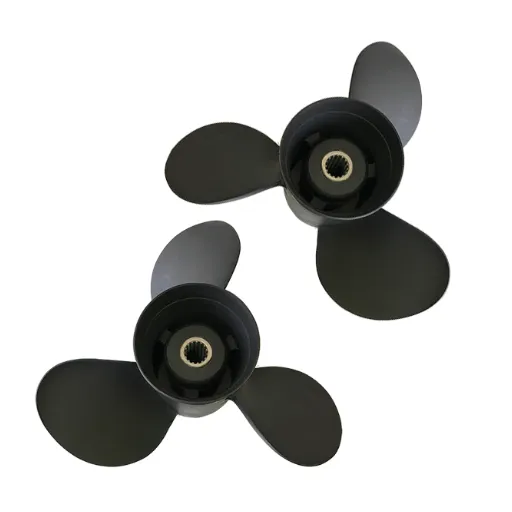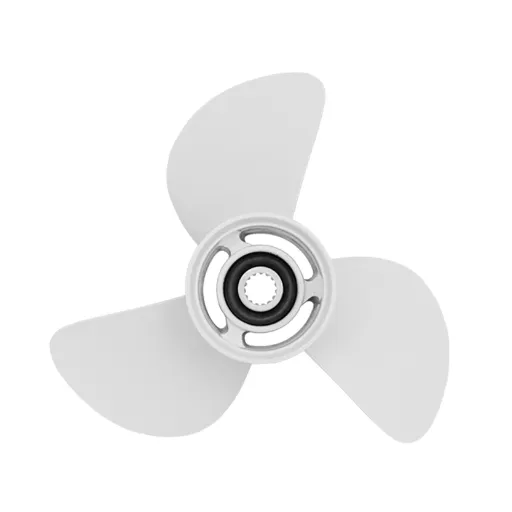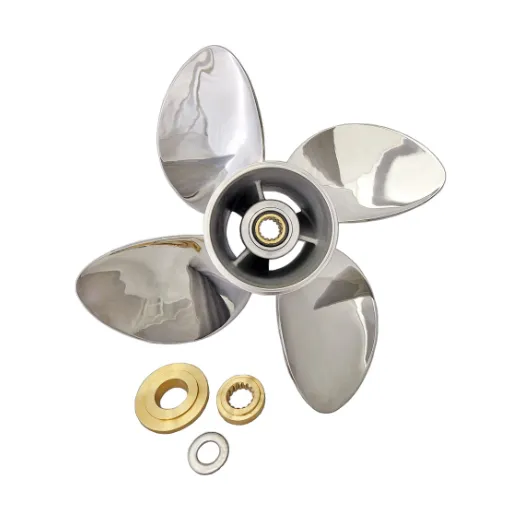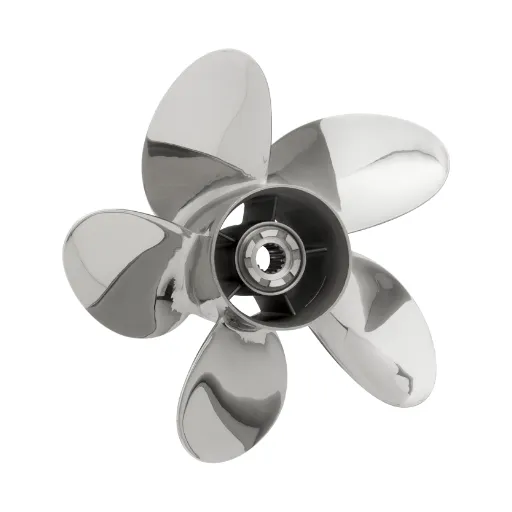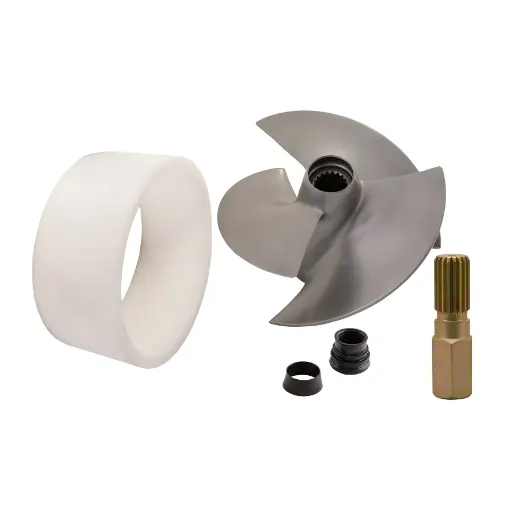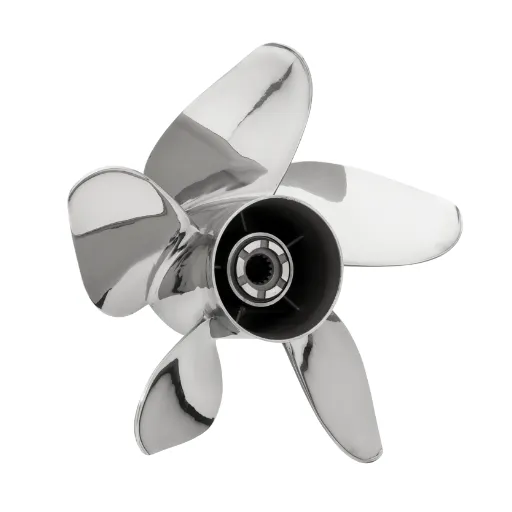Almost nothing on a boat affects performance more than the propeller. Tohatsu outboard motors come with power, yet their full performance can only be achieved with a proper propeller specific to one’s requirements. Whether one wants less fuel consumption, more speed, or better handling, the right prop is crucial for everything to work together. This article contains everything you should know about Tohatsu propellers so that you can make the right choice for your boating experience. We walk you from the basic concepts of propellers to choosing the right one for your boat so you are ready to set sail.
Introduction to Tohatsu Propellers
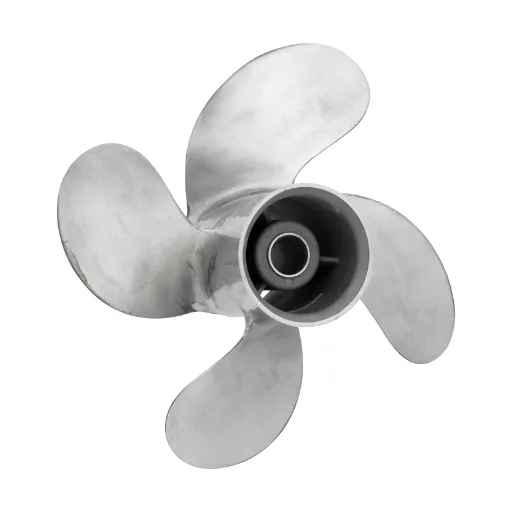
What is a Tohatsu Propeller?
A Tohatsu propeller is an integral part of the Tohatsu outboard system and is designed to efficiently convert engine power to thrust used in moving a boat in the water. Well known in terms of reliability and performance, Tohatsu propellers match the fine engineering standards of Tohatsu outboard motors for smooth running and top speed.
Tohatsu propellers are made in different sizes, materials, and blade configurations to meet the broad requirements of the boating world along with motor specifications. Tohatsu provides propeller variants that give performance tailored to your needs—whether it’s calm lake waters, cruising the open seas, or water sports. The propeller is made for durability and efficiency while improving fuel efficiency and extending engine life span.
Selection of the appropriate Tohatsu propeller depends upon several aspects, like the size and type of your boat for instance, the typical boating conditions you navigate and performance goals you are working for. A particular pitch and diameter must be selected to give your outboard motor maximum performance. The very name Tohatsu denotes innovation and quality; thus their propellers are held in esteem by boaters recreationally and professionally.
Importance of Choosing the Right Outboard Prop
Choosing an outboard prop suitable for your vessel is crucial to offering peak performance, fuel economy, and functionality. With the propeller imparting it into or out of the water with force, it directly controls the boat’s movement—speed, acceleration, and handling. If the wrong prop is chosen, it puts strain on the engine, potentially damaging it faster.
Key Benefits of the Right Propeller:
- Fuel Efficiency: Ensures the engine operates within its rated RPM range, reducing fuel consumption while delivering maximum power.
- Enhanced Performance: Provides smooth ride and better handling in various conditions such as rough seas or calm waters.
- Extended Engine Life: Prevents engine strain that could reduce lifespan or cause sudden operational failure.
- Cost Savings: Reduces maintenance costs and provides enough fuel for longer trips on water.
Durability and safety are other important factors that should make you prioritize the right outboard prop. A prop that is not correctly matched to the engine will make that engine strain and could reduce its lifespan, or at worst, result in sudden failure upon operation. This would entail very costly repairs and could cause safety hazards. Properly selecting a propeller for your boat’s size, engine capacity, and normal usage would ensure a smooth, safe, and enjoyable boating experience. It would, of course, be a good idea to check with the manufacturer of either your boat or outboard for recommendations.
Overview of Tohatsu Propeller Range
Tohatsu provides an all-around range of propellers that cater to almost any boating need, thus securing optimum performance and working efficiency of the boat. These propellers are designed with heavy-duty materials and precision engineering to propel the boat at optimum levels, cutting down on fuel consumption while offering credible service under varying water conditions. Whether used for fun, fishing, or serious go-fast activity, Tohatsu propellers have one mold to fit the job.
The Tohatsu propeller lineup consists of all types of aluminum and stainless steel propellers. Aluminum propellers are lightweight and less expensive and should be good for general use, in fact, they are a very popular choice among casual boaters. Stainless steel propellers are harder and more resistant to damage and keep performing long after aluminum propellers would have given up in harsh environments. Both types come in a variety of sizes and pitches to match different engine capacities and boating uses.
Keep your engine’s horsepower, the weight and size of the boat, and your common boating activities in mind when looking for the correct Tohatsu propellers. Tohatsu has very clear guidelines and recommendations put in place to assist owners to select the best propeller to meet their specific needs. Beyond this, choosing your propeller from the Tohatsu range will ensure the best handling, greater fuel economy, and better general performance.
Types of Tohatsu Boat Propellers
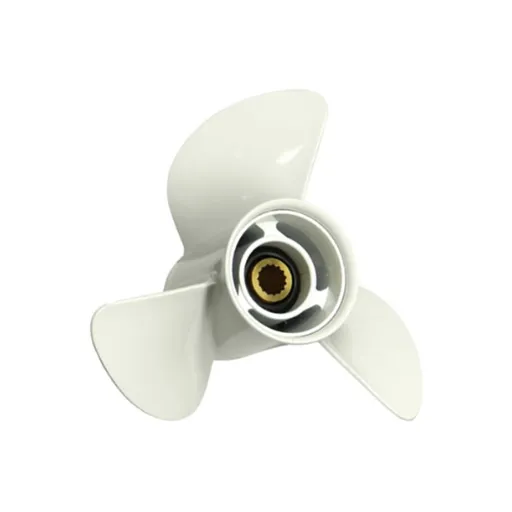
Standard vs. Performance Props
Props stand for the durability and general use, whereas performance props prioritize speed and efficiency.
| Key Point | Standard Props | Performance Props |
|---|---|---|
| Purpose | General use | Speed & efficiency |
| Durability | High | Moderate |
| Material | Aluminum | Stainless steel |
| Cost | Lower | Higher |
| Speed | Moderate | High |
| Fuel Efficiency | Moderate | High |
| Customization | Limited | Extensive |
Material Choices: Aluminum vs. Stainless Steel
Aluminum props are cost-effective and suitable for light working, while stainless steel props are weather-resistant and designed for superior performance.
| Key Point | Aluminum | Stainless Steel |
|---|---|---|
| Cost | Low | High |
| Weight | Light | Heavy |
| Durability | Moderate | High |
| Performance | Basic | Superior |
| Corrosion Resistance | Moderate | High |
| Best For | Casual boating | High-performance use |
| Repair Options | Easier | Limited |
Selecting the Right Tohatsu Propeller
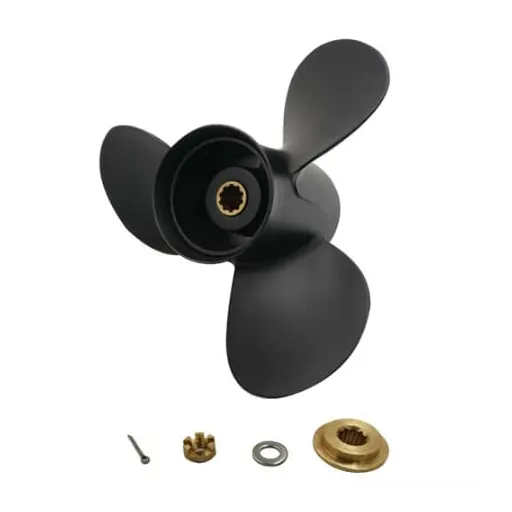
Matching Propeller Size to Your 20HP Outboard Motor
For instance, 20HP outboard motors will generally be paired with a propeller having a combination of diameter and pitch suitable for its output capacity. Tohatsu provides the specifications for the propeller size best suited for each engine model in its manuals. A 4-stroke 20HP Tohatsu may use an aluminum propeller with between 9 and 11 inches pitch for light to medium loads so as to make the engine stay within the optimal RPM range.
This could be accomplished by using the latest tools and resources, such as Tohatsu’s online propeller selector guides. These will guide you through the process and frequently add together engine data, boat weight, and the intended use to recommend the best prop. You might also want to read some recent reviews or user comments to get an idea of how these propellers have performed for others under different conditions.
⚡ Factors to Consider: Boat Type and Usage
When considering a propeller, the type of boat and its application come to mind. A small fishing boat would put first-line emphasis on fuel economy and cruise speed, while a high-speed boat looks at max speed and acceleration. Tow boats, on the other hand, require propellers to provide thrust and precision at relatively lower speeds for water skiing or wakeboarding. Knowing what your boat is expected to do accentuates the first step toward making a well-informed decision.
Speaking from personal experience, identifying typical operating conditions of your boat has a great bearing on your choice of the propeller that you will use. Considerations such as average weight your boat carries, conditions of water you usually face, whether speed is a factor to you or rather consistency or fuel economy, all are factors that narrow the choice options. For example, when using your boat for recreational or fishing purposes, a propeller which puts fuel economy ahead of a little bit more speed or slight handling consistency may be preferred.
Ultimately, you’d want to match the propeller with the boat and how it is generally used for optimum performance. By taking the time to analyze your needs carefully, you will not just have a better overall boating experience; you will also be extending the life of your engine and increasing its fuel economy. It’s worth taking time to think about things like boat type and use before making a choice.
Maintenance and Care for Tohatsu Propellers
Regular Inspection and Cleaning Techniques
Regular inspection goes a long way toward preventing problems and guaranteeing good performance of your Tohatsu propeller. Visual inspection of the propeller must invariably be undertaken to check for the presence of damages: cracks, dents, or distortion in the blades, despite any trace of imperfection that can have adverse effects on efficiency at least, and fuel consumption over time. Turning the propeller by hand allows you also to look and feel for unusual resistance or noise from the bearing or drive shaft. Regular inspection especially after going through relatively shallow waters or water full of debris can avert the minor failures from turning into large repairs on the way.
In shaping performance, proper cleaning methods are essential to keep the propellers running at optimal efficiencies. Rinse off any buildup of salt or other residue with appropriate formulations of mild detergent. If your propeller is aluminum or stainless steel, do not use abrasive materials for cleaning, as this may cause surface scratches and impair its aerodynamics. A soft-bristle brush or cloth should be used for tougher stains to keep the finish intact. Moreover, periodically applying a very light application of marine grease on the propeller shaft will help keep it free from corrosion and make future removal for maintenance or replacement much easier.
Recommended beyond cleaning and visual inspection is scheduling recurring maintenance by professionals so that they can attend to any issues on the inside, balancing, and calibrate the propeller to conform with the manufacturer’s specifications. When put together with these routine care processes and the ever-present attention to detail, propeller life can be extended and highest boating efficiency sustained. Remember, the best way to maintenance is proactive rather than reactive—a comforting thought while out on the water.
Repairing vs. Replacing a Damaged Prop
Repairing a prop is considered a cost-effective option in the event of minor damage, and replacement is an ideal choice in severe damage or for performance upgrades.
| Key Point | Repairing | Replacing |
|---|---|---|
| Cost | Low | High |
| Damage Level | Minor | Severe |
| Time | Short | Long |
| Performance | Restored | Improved |
| Longevity | Moderate | High |
| Suitability | Temporary | Permanent |
| Customization | Limited | Extensive |
💡 Tips for Extending the Life of Your Outboard Propeller
Here are some practical tips helping you to extend the life of your outboard propeller:
- Inspect Regularly: Look for dents and cracks, as well as for bends, on your propeller. Early detection of minor damages prevents deterioration and preserves performance.
- Avoid Shallow Waters: Use shallow waters at your own risk; by doing so, you may likely collide with submerged objects such as rocks, sandbars, or debris.
- Install a Propeller Guard: A protective guard minimizes the chances of any impact damage and deflects floating debris, which could also harm the propeller.
- Clean and Lubricate: Keep the prop clean from any buildup of algae, barnacles, and other similar matter. Lubricate the shaft with marine-grade lubricant to ensure it runs smoothly and also to prevent corrosion.
- Balance Your Propeller: Ensure propeller balance to prevent vibration and wear on both the propeller and the engine. Professional balancing service is the best option.
- Store Properly: While not in use, store the boat in any area shielding the prop from corrosion, rough weather, or accidental impact. Prop removal during the off-season may add to the protection.
- Know Your Loading Limits: Overloading your boat may also begin wear and tear on the propeller and engine. Hence, ensure operating within the weight limits recommended for the boat.
Proper maintenance and careful handling come a long way for extending the life of an outboard propeller, thereby saving time and money on repair or replacement and adding to a better boating experience.
📚 References
- • Tohatsu M40D Service Manual – A service manual detailing routine checks, including propeller inspection for Tohatsu engines.
- • Tohatsu Outboard Repair Manual – A comprehensive guide on Tohatsu outboard maintenance, including propeller-related tips.
- • Best 25 HP Outboard – IRC– A resource discussing outboard motor brands, including Tohatsu, and the importance of propeller selection.
- • Top 20 Electric Outboard Motor Companies – Discovery – An overview of Tohatsu’s contributions to outboard motor manufacturing.
- • ARC Arrives – University of Florida Digital Collections – A document mentioning Tohatsu genuine parts, including propellers.
- • Click here to read more.
❓ Frequently Asked Questions (FAQ)
Q: What is a Tohatsu propeller and its importance?
A: Tohatsu propeller simply means a boat propeller meant for Tohatsu outboard motors. It is important in determining the overall functioning of your boat, such as speed, fuel consumption, and steerability.
Q: How to select the right diameter for the Tohatsu propeller?
A: Diameter of your propellers should be exactly as per the specification provided by the manufacturer, usually found in the owner’s manual. A too-large or too-small diameter propeller will obstruct the performance of your boat.
Q: What advantages does a 3-blade Tohatsu propeller possess?
A: Generally, the 3-blade Tohatsu prop will strike the best compromise between speed and control. It provides better thrust, which is beneficial in most boating conditions.
Q: Why are hub and spline so important in the Tohatsu propeller?
A: The hub is the center of the propeller; it keeps the propeller connected to the outboard motor. The spline is a set of grooves that ensure the proper locking of the hub. Both components are necessary for the efficient and safe operation of the propeller.
Q: How can I tell whether my Tohatsu propeller is damaged?
A: Visible cracks, bent blades, or loss of performance during boating activities may be signs of damage. If you observe any of these symptoms, it would be recommended for you to inspect the propeller and consider replacing it with an original Tohatsu propeller.
Q: What distinguishes factory from aftermarket Tohatsu propellers?
A: A factory Tohatsu propeller is made specially for Tohatsu outboard motors so that optimum performance and compatibility are ensured. An aftermarket propeller may come in different qualities and designs, so choose one wisely if you want to go for an aftermarket one.
Q: How do I maintain my Tohatsu propeller to make it last longer?
A: Inspect your Tohatsu propeller regularly for wear and tear. Clean it so that barnacles or dirt from the sea will never build on it. Ensure proper installation such that corrosion does not reduce the working life quality of your propeller.
Q: Can I upgrade my Tohatsu propeller for better performance?
A: Yes, changing the pitch or diameter might improve the performance of your boat. It is very important, however, to consider the horsepower rating of the Tohatsu outboard motor when selecting any particular propeller for performance.
Q: Can I fit a Tohatsu propeller to different make outboards?
A: Some of these propellers will, in fact, fit other outboards; however, Tohatsu propellers are designed specifically for Tohatsu outboards. Using these propellers in other outboards might end up compromising performance or safety; thus, it is best to go with the original propeller meant for your particular motor.
Selecting the right Tohatsu propeller is essential for maximizing your boat’s performance, efficiency, and longevity. Take the time to understand your needs, maintain your equipment properly, and enjoy smooth sailing on the water!




